Brain endothelial cells exposure to malaria parasites links type I interferon signalling to antigen presentation, immunoproteasome activation, endothelium disruption, and cellular metabolism
- PMID: 36993973
- PMCID: PMC10042232
- DOI: 10.3389/fimmu.2023.1149107
Brain endothelial cells exposure to malaria parasites links type I interferon signalling to antigen presentation, immunoproteasome activation, endothelium disruption, and cellular metabolism
Erratum in
-
Corrigendum: Brain endothelial cells exposure to malaria parasites links type I interferon signalling to antigen presentation, immunoproteasome activation, endothelium disruption, and cellular metabolism.Front Immunol. 2023 Nov 28;14:1331366. doi: 10.3389/fimmu.2023.1331366. eCollection 2023. Front Immunol. 2023. PMID: 38090584 Free PMC article.
Abstract
Introduction: Cerebral malaria (CM) lethality is attributable to induction of brain edema induction but the cellular mechanisms involving brain microvascular endothelium in CM pathogenesis are unexplored.
Results: Activation of the STING-INFb-CXCL10 axis in brain endothelial cells (BECs) is a prominent component of the innate immune response in CM development in mouse models. Using a T cell-reporter system, we show that Type 1 IFN signaling in BECs exposed to Plasmodium berghei-infected erythrocytes (PbA-IE), functionally enhances MHC Class-I antigen presentation through gamma-interferon independent immunoproteasome activation and impacted the proteome functionally related to vesicle trafficking, protein processing/folding and antigen presentation. In vitro assays showed that Type 1 IFN signaling and immunoproteasome activation are also involved in the dysfunction of the endothelial barrier through disturbing gene expression in the Wnt/ß-catenin signaling pathway. We demonstrate that IE exposure induces a substantial increase in BECs glucose uptake while glycolysis blockade abrogates INFb secretion impairing immunoproteasome activation, antigen presentation and Wnt/ß-catenin signaling.
Discussion: Metabolome analysis show that energy demand and production are markedly increased in BECs exposed to IE as revealed by enriched content in glucose and amino acid catabolites. In accordance, glycolysis blockade in vivo delayed the clinical onset of CM in mice. Together the results show that increase in glucose uptake upon IE exposure licenses Type 1 IFN signaling and subsequent immunoproteasome activation contributing to enhanced antigen presentation and impairment of endothelial barrier function. This work raises the hypothesis that Type 1 IFN signaling-immunoproteasome induction in BECs contributes to CM pathology and fatality (1) by increasing antigen presentation to cytotoxic CD8+ T cells and (2) by promoting endothelial barrier dysfunction, that likely favor brain vasogenic edema.
Keywords: antigen presentation; cerebral malaria (CM); endothelial cells; glucose metabolic alterations; malaria; metabolome; proteome; type - 1 interferons.
Copyright © 2023 Shafi, Végvári, Zubarev and Penha-Gonçalves.
Conflict of interest statement
The authors declare that the research was conducted in the absence of any commercial or financial relationships that could be construed as a potential conflict of interest.
Figures
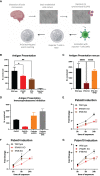
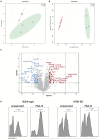
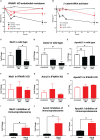
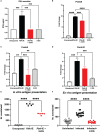
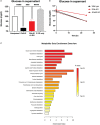

Similar articles
-
Brain endothelial STING1 activation by Plasmodium-sequestered heme promotes cerebral malaria via type I IFN response.Proc Natl Acad Sci U S A. 2022 Sep 6;119(36):e2206327119. doi: 10.1073/pnas.2206327119. Epub 2022 Aug 29. Proc Natl Acad Sci U S A. 2022. PMID: 36037380 Free PMC article.
-
Corrigendum: Brain endothelial cells exposure to malaria parasites links type I interferon signalling to antigen presentation, immunoproteasome activation, endothelium disruption, and cellular metabolism.Front Immunol. 2023 Nov 28;14:1331366. doi: 10.3389/fimmu.2023.1331366. eCollection 2023. Front Immunol. 2023. PMID: 38090584 Free PMC article.
-
Transcriptional responses of brain endothelium to Plasmodium falciparum patient-derived isolates in vitro.Microbiol Spectr. 2024 Jul 2;12(7):e0072724. doi: 10.1128/spectrum.00727-24. Epub 2024 Jun 12. Microbiol Spectr. 2024. PMID: 38864616 Free PMC article.
-
Cerebral malaria: gamma-interferon redux.Front Cell Infect Microbiol. 2014 Aug 15;4:113. doi: 10.3389/fcimb.2014.00113. eCollection 2014. Front Cell Infect Microbiol. 2014. PMID: 25177551 Free PMC article. Review.
-
Brain Endothelium: The "Innate Immunity Response Hypothesis" in Cerebral Malaria Pathogenesis.Front Immunol. 2019 Jan 29;9:3100. doi: 10.3389/fimmu.2018.03100. eCollection 2018. Front Immunol. 2019. PMID: 30761156 Free PMC article. Review.
Cited by
-
Unravelling mysteries at the perivascular space: a new rationale for cerebral malaria pathogenesis.Trends Parasitol. 2024 Jan;40(1):28-44. doi: 10.1016/j.pt.2023.11.005. Epub 2023 Dec 8. Trends Parasitol. 2024. PMID: 38065791 Free PMC article. Review.
-
The spatiotemporal transcriptional profiling of murine brain during cerebral malaria progression and after artemisinin treatment.Nat Commun. 2025 Feb 11;16(1):1540. doi: 10.1038/s41467-024-52223-7. Nat Commun. 2025. PMID: 39934099 Free PMC article.
-
Endothelial type I interferon response and brain diseases: identifying STING as a therapeutic target.Front Cell Dev Biol. 2023 Sep 14;11:1249235. doi: 10.3389/fcell.2023.1249235. eCollection 2023. Front Cell Dev Biol. 2023. PMID: 37791071 Free PMC article. Review.
-
Genetic variants and down-regulation of CACNA1H in pheochromocytoma.Endocr Relat Cancer. 2024 Jul 8;31(9):e230061. doi: 10.1530/ERC-23-0061. Print 2024 Sep 1. Endocr Relat Cancer. 2024. PMID: 38864697 Free PMC article.
References
-
- Malaria . Available at: https://www.who.int/news-room/fact-sheets/detail/malaria.
-
- World malaria report . (2016). Available at: https://www.who.int/publications/i/item/9789241511711.
Publication types
MeSH terms
Substances
LinkOut - more resources
Full Text Sources
Research Materials

